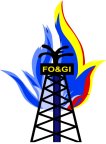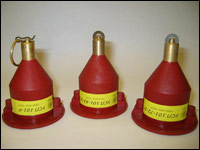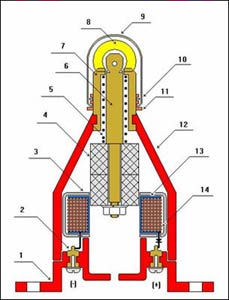
Pyrogen Technologies Sdn Bhd, An ISO 9001:2000 Company

Pyrogen Technologies Sdn Bhd, An ISO 9001:2000 Company
 Available from FO&GI Houston Texas |
 |
 |
| New T-Start manual pull or thermal
activation device |
Simple design (protective cap shown) |
T-start is a unique autonomous thermal activation and detection device that allows detecting a fire and activating a powder, aerosol or gaseous fire suppression system. Also the device has features such as provision of a signal to a fire panel and incorporation of an additional output designed to shut down the electrical equipment or activate an alarm (depends on a specific modification).
T-start can also be used as a thermal detector with a fixed temperature reading and can be connected to an existing fire detection circuit or a fire-indicating panel.
T(HZ)-start is a special design version of T-start containing an intrinsically safe interface and designed for use in hazardous areas.
Operation
No external power supply is required for operation of the T-start device.
 |
|
1. Base 2. Electric terminals 3. RF & EMI shielded protective cover 4. Magnet 5. Housing made from high-temperature plastic 6. Compression spring 7. Thermal sensitive lock made from shape memory alloy 8. Safety pin 9. Bronze nose piece 10. Bronze rod 11. Frame of reel 12. Electromagnetic coil 13. Diode |
The main feature of the automatically operated T-start is a special heat-sensitive element (7) with a rated temperature reading. When subjected to a fire or a heat the element expands at the rated temperature reading and releases a spring-loaded rod (10) mounted inside a nosepiece (9).
The spring moves a cylindrical shape magnet (4), which is mounted on the rod (10), through an induction coil (12). The induction coil generates an electric impulse. The impulse is transmitted to the electrical terminals (2) and further to the aerosol or powder fire extinguishers.
Technical Characteristics
Applications
Industrial (e.g. electric cabinets, storage for flammable materials, workshop), mining, marine, domestic (garage), etc.
Service Life
The reliability of the device is not less than 50,000 hours under normal ambient conditions. The service life of the device is 10 years.
Essential accessories
Optional accessories
fire protection systems , Halon replacement , fire Suppression , fire suppression systems , fire extinguishers , fire science, flame management, US EPA, SNAP, ISO, ICAO, FAA US DOT, NFPA, SAE, FM, NIST, ATA, UL, SSL, AS/NZS, ODP , GWP , Pyrogen , PYROGEN , Airline Cargo conversions , Class A fire , Class B fire , Class C fire , EMAA, Encapsulated Micron Aerosol Agent, FAR 25. Aircraft Cargo Fires, Telecommunications fires , Transportation fires , Petrol chemical fires , Fire detection, Automobile Fire , Truck fires , Train fires , Building fires , Structural fires , petroleum fires , engine fires , marine fires , cargo fires , wood fires , Halon flooding , UL 1058, aircraft fire protection , aircraft crash , airline cargo fire , airline fire protection , FAA Technical center , Oil rig fires , gas rig fires , vehicle fires , electrical fire suppression , computer room fires , ship fires , machinery fires , merchant vessel fires , train fires , generator fires , battery fires , Wheel fires , brake fires , tire fires , car fires , home fires , Loss productivity , boeing fire test , 737 fire test , NRL , Naval Research Laboratory , Naval air systems command , NASC , NAVAIR , AS/NZS 4487:1997 , Joint strike fighter , JSF, HARC , NTSB , Transport canada , NIST , FAA Technical Center , Thermal Acoustic Insulation Blankets , IMO , International Maritime commission , USCG , United states coast guard , MCA , Pyrogen Ltd. Pyrogen Corp. Sdn. Bhd. , IAFC , IFPA ,